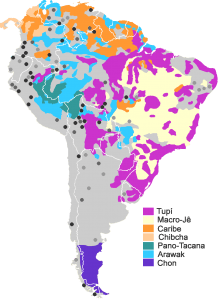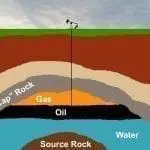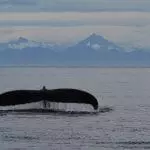[Originally published as Languages: Can all Human be Traced to Babel?]
After the Flood, God commanded humanity to “increase in number and fill the earth” (Genesis 9:1). Out of rebellion, we did the exact opposite: “Then they said, ‘Come, let us build ourselves a city, with a tower that reaches to the heavens, so that we may make a name for ourselves and not be scattered over the face of the whole earth’” (Genesis 11:4). Rather than dispersing and multiplying as God asked, we congregated and started building a gigantic tower as a symbol of our power, known as the Tower of Babel.
God’s response to this disobedience was to confuse our language and disperse humans around the globe. This resulted in the groups who shared the same (new) language to band together during the dispersal as we moved and settled in various parts of the world (Genesis 11:8–9). Genesis 10:5, 20 and 31 describes Noah’s descendants spreading out over the earth “by their clans and languages, in their territories and nations.” This dispersal included between 70 and 100 families that came out of Babel with new languages because Genesis 10 gives a listing of most of these families.[i]
How does this tally when considering all the languages we have today? Quite well. Today there are 7,097 languages and 136 language families. While 7,097 may seem like a high number (given the initial start of 70–100), 80% of the people in the entire world speak just 93 languages, with the remaining 20% speaking the other 7,004. In other words, 1.3% of the known languages in the world are spoken by 80% of the people in the world![ii]

[i] Since not all the family lines are listed in Genesis 10 and a few more are listed in Genesis 11, it’s likely that between 78 and 100 languages were divinely given at Babel. See: Bodie Hodge, “Was the Dispersion at Babel a Real Event?” (August 19, 2010) (Chapter 28). Answers in Genesis: https://answersingenesis.org/tower-of-babel/was-the-dispersion-at-babel-a-real-event/ (November 5, 2018).
[ii] Ethnologue: Summary by language size (available: https://www.ethnologue.com/statistics/size)
[iii] For global information visit: https://en.wikipedia.org/wiki/List_of_languages_by_number_of_native_speakers
[iv] Bill Cooper, After the Flood: The Early Post-flood History of Europe Traced Back to Noah, (New Wine Press: West Sussex, England). Available: www.creationism.org/books/CooperAfterFlood/index.htm#CooperAF_TOC (November 5, 2018).
[v] See several sources:
www.icr.org/article/human-languages-fit-young-earth-model
www.icr.org/article/scientists-get-glimpse-into-infant
www.icr.org/article/human-language-all-or-nothing-proposition






